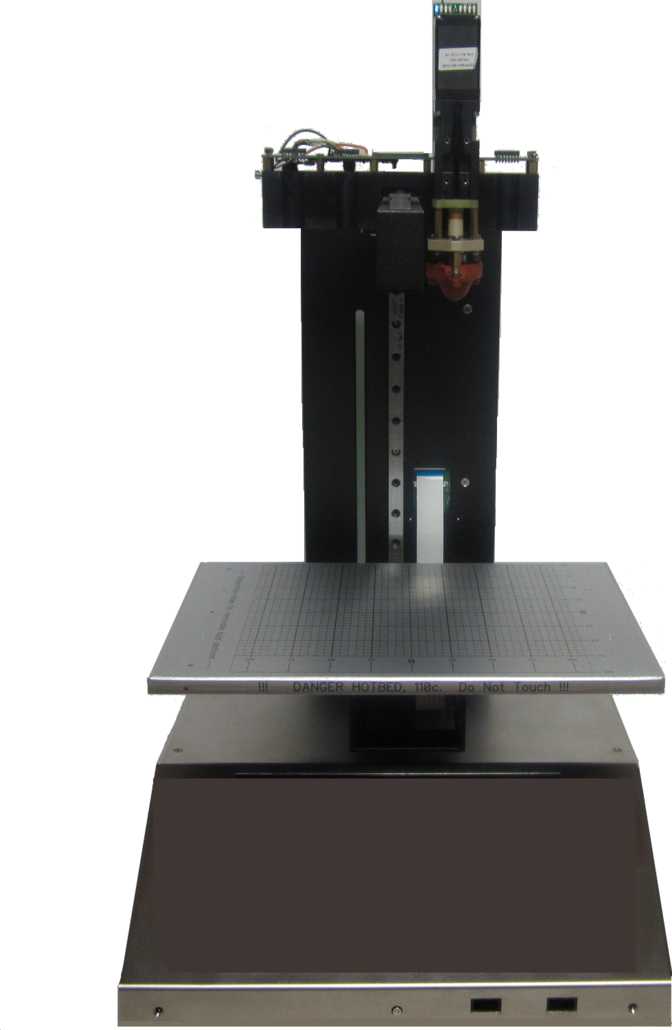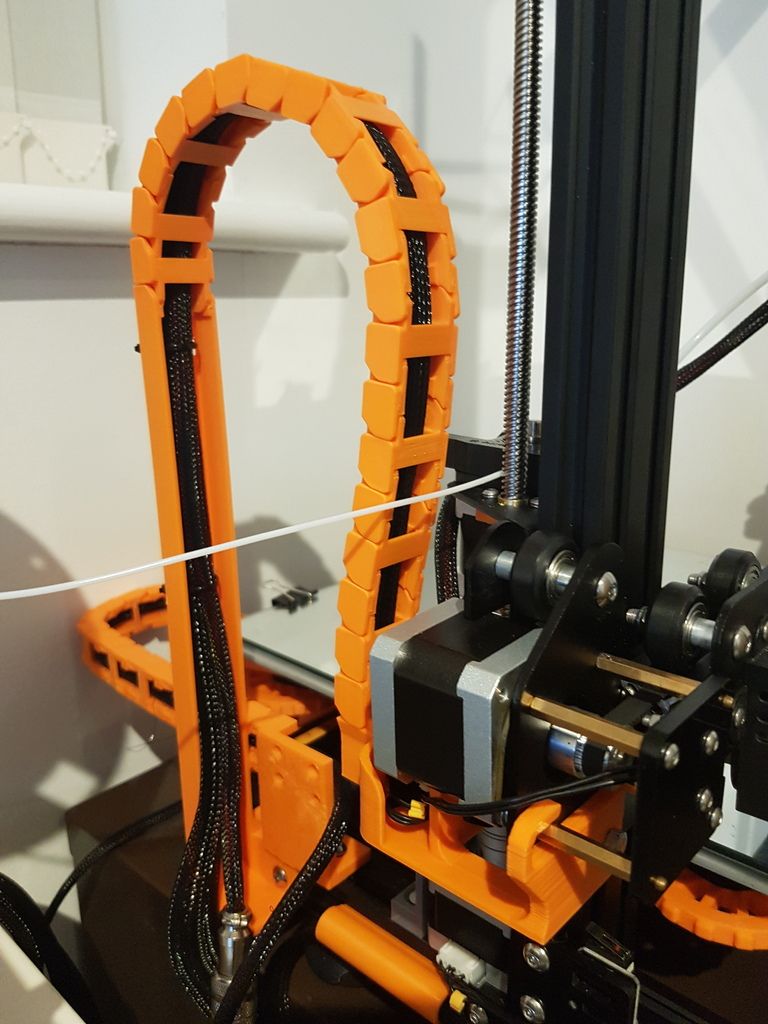Next gen 3d scanner
3D Scanner HD
- Tools
- Tools
Official website
www.nextengine.com
New multi-laser scanning technology + full color surface. $2995. exports obj, stl, vrml + more. tech specs, demo, scan gallery, online store. Keywords : nextengine, 3d scanner, hd, cad, 3d models, 3d, stl, obj, vrml, surface, laser, digitize, design, solidworks, 3ds max, zbrush, rhino, mathematica
High Fidelity. Low Price.
NextEngine delivers an unprecedented combination of power and affordability. At 0.005 inch accuracy, it rivals systems costing 10 times the price. It’s not a cheaper 3D Scanner. It’s a better scanner that costs less. Way less.
A mouse created with 3D Scanner © 3D Scanner HD, 2015
Clean Data. Compared with many $25,000+ scanners, NextEngine’s data fidelity is far cleaner. No more annoying pops and spikes that take hours to edit out. The surface data is so clean, you can just use it straight from the scanner.
New Technology. The secret behind this big change is new technology invented by NextEngine. An all-new electro-optical architecture and sophisticated new algorithms use an array of Lasers to scan in parallel. Result: higher point throughput and much better data fidelity.
Full Color
Optically-Locked to Geometry.
NextEngine also captures details that many high-end scanners don’t: Rich, full-color photo data for every surface point. And because it’s optically synchronous, there’s no skew between the color and geometry.
A bottle created with 3D Scanner © 3D Scanner HD, 2015
Built-In Studio Lighting. Every NextEngine Scanner comes with a built-in array of spatially diverse, diffuse illuminators for shadow-free imaging. And these lights are specially designed to provide a wide color gamut for excellent color rendering.
Simplified Modeling. Optically-locked surface color makes assembling models much easier.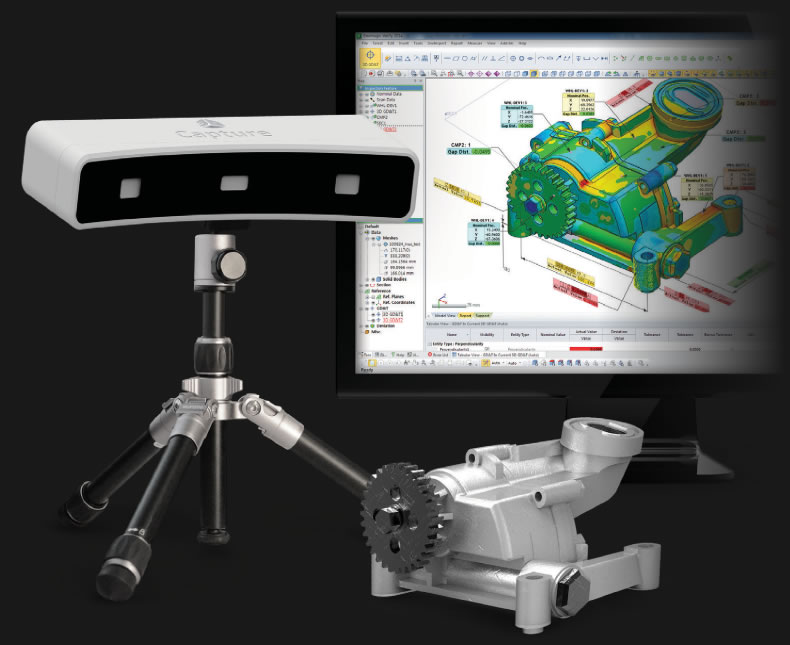 NextEngine ScanStudio software, an integral part of the system, let’s you place “virtual beads” on your screen images to instantly align different views into a single model.
NextEngine ScanStudio software, an integral part of the system, let’s you place “virtual beads” on your screen images to instantly align different views into a single model.
Lots of Stuff. Lots of Sizes.
NextEngine’s proprietary scan technology and innovative instrument configuration let you capture a remarkably diverse range of objects in a variety of materials and sizes. Parts found in many different industries can be captured.
Objects created with 3D Scanner © 3D Scanner HD, 2015
No Preset Size Limit. Since there’s no bulky box to put your object inside, and it doesn’t spin while it scans, you can work with larger objects. You can composite multiple views together to get objects bigger than the field size. Twin ranges cover Macro and Wide fields.
Surface Flexibility. Many typical surfaces can be captured in their natural state. For difficult surfaces, easy-to-use markers let you prep them right at your desk. PowderPens put a light powder film on very shiny or dark surfaces, and PaintPens let you coat even transparent or mirror surfaces for easy scanning.
PowderPens put a light powder film on very shiny or dark surfaces, and PaintPens let you coat even transparent or mirror surfaces for easy scanning.
To stay on your desk, it has to be small. Really small. It is. Incredibly, the scanner’s footprint is no large than an envelope. Yet in that compact package sits all the power you need to bring your physical media into your digital world.
3D Scanner © 3D Scanner HD, 2015
Use it Everyday. Ideas happen when they happen. To fuel your creative process, or email an idea to a colleague, your scanner needs to be ready at hand like your phone or keyboard. That’s why it’s designed to work in ordinary office lighting without darkrooms or bulky backgrounds.
Dress Up Your Desk. And if it’s going to stay on your desk, it should look great. This precision instrument is beautifully detailed, and built from high quality materials like bead-basted anodized aluminum alloy, and crystal clear polycarbonate.![]() Think sculpture. Imagine the conversations it will inspire.
Think sculpture. Imagine the conversations it will inspire.
Plug and Play. Point and Click.
Easy to install. Easy to drive. No memory cards to shuffle, no data files to copy or convert. No hidden buttons to push. No lenses to adjust. No calibration procedures to do. Just a simple USB 2.0 appliance that plugs into your PC.
3D Scanner interface © 3D Scanner HD, 2015
Simple Dashboard. ScanStudio Software (included) provides everything you need to control your scanner from one elegant graphical settings panel. With a couple of clicks, your system will automatically sequence multiple scans. Simple but powerful built-in tools align and merge multiple views into a single model.
Live Viewfinder. And for all you WYSIWYG lovers out there… how about a live hi-res image showing you exactly what you’re about to scan? Use your mouse to select the area you want, and click Start. Your scan will be on your screen in about 90 seconds.
Partners
CG Spectrum’s online school for Animation, VFX and Game Design is inspiring and preparing the next generation of production-ready artists.
Vertex School is a leader in online Game Design classes that offers intensive Bootcamps based on the ever-changing needs of the gaming industry.
SineSpace is a multi-user simulation engine available free on a public grid and on a paid license basis for private grids.
Innovative online courses for a successful career in the Art, Games & VFX industries.
Explore vendorsLeica BLK360 Imaging Laser Scanner
- Home
- Products
- Laser Scanners
- Scanners
- Leica BLK360
The next generation of the smallest and lightest imaging laser scanner has arrived.
The all-new Leica BLK360 is an advanced precision imaging laser scanner. At the push of a button, users can capture a full scan with spherical images in only twenty seconds - over five times faster than the BLK360 G1.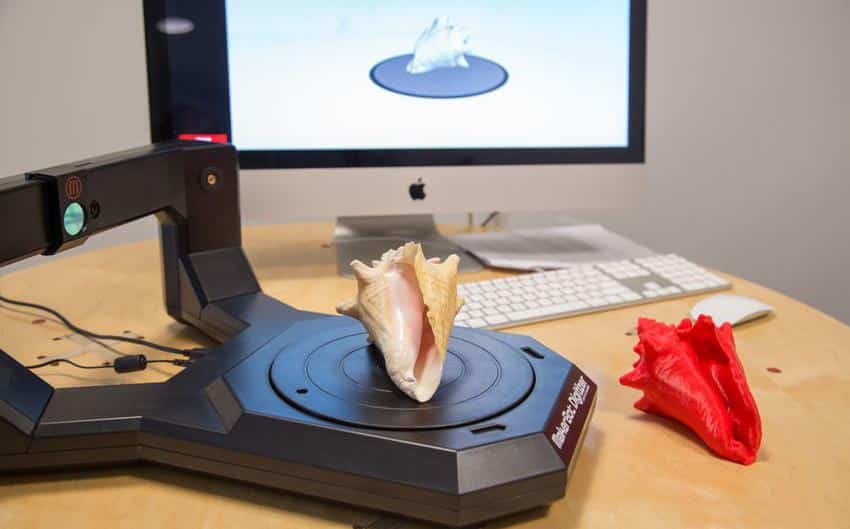 Blaze through job sites with best-in-class rapid scanning that doesn’t compromise on quality, while the Visual Inertial System (VIS) Technology automatically combines your scans on-site to speed up your workflow and help you make sure your datasets are complete. The BLK360 enables users to work faster and smarter while getting the data they need immediately.
Blaze through job sites with best-in-class rapid scanning that doesn’t compromise on quality, while the Visual Inertial System (VIS) Technology automatically combines your scans on-site to speed up your workflow and help you make sure your datasets are complete. The BLK360 enables users to work faster and smarter while getting the data they need immediately.
BLK360 data is valuable for many uses, from traditional AEC to mind-bending VFX and VR, and users can easily transfer and work with it in your software ecosystem to create immersive and highly accurate deliverables and experiences.
Key features:
- Four scan settings capture data in 7, 13, 30, or 75 seconds at 680,000 points per second
- Rich High-Dynamic Range (HDR) imagery with 5 bracket HDR
- Small and light, measuring 155x80mm and weighing just 850g with batteries
- Five times faster than the BLK360 G1, taking 20 seconds for a full-dome scan with photospheres
- Visual Inertial System (VIS) automatically pre-registers scans in the field
- High-speed data transfer via USB-C and Wi-Fi
Users can control the imaging laser scanner with the Leica Cyclone FIELD 360 mobile-device app and easily pre-register captured scans enabled by the VIS technology.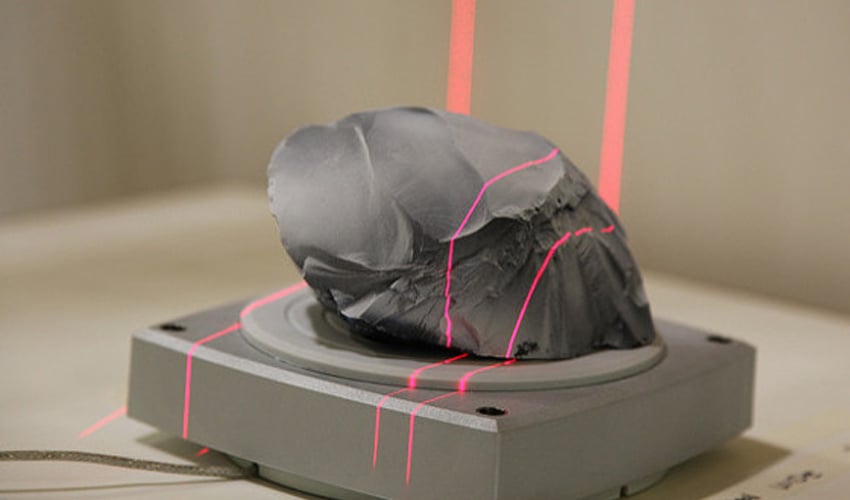 Image and point cloud data is streamed to a smartphone or tablet or final project data to Leica Cyclone REGISTER 360 or Cyclone REGISTER 360 (BLK Edition) via Wi-Fi, with full data synchronisation between devices. With automated workflows in both software offerings, the new BLK360 dramatically streamlines the reality capture process. Simple export of LGS, RCP, or E57 files makes working with point cloud data downstream simple and efficient, allowing users to spend less time processing data and more time creating meaningful deliverables.
Image and point cloud data is streamed to a smartphone or tablet or final project data to Leica Cyclone REGISTER 360 or Cyclone REGISTER 360 (BLK Edition) via Wi-Fi, with full data synchronisation between devices. With automated workflows in both software offerings, the new BLK360 dramatically streamlines the reality capture process. Simple export of LGS, RCP, or E57 files makes working with point cloud data downstream simple and efficient, allowing users to spend less time processing data and more time creating meaningful deliverables.
The BLK360 also includes a free companion app, BLK Live, allowing the user to control the imaging laser scanner and immediately view captured data for on-site feedback, quality assurance, quality control, and export E57 files. Available for iOS and Android.
The new BLK360 also makes it easy to get your data into your preferred software and to share your scans with others. Directly upload your data to HxDR with automatic conversion to OBJ and cloud-based visualisation, allowing others to work with and download your data. Or transfer your data to Cyclone REGISTER 360 or export to E57 via USB-C or WLAN for Scan-to-BIM workflows.
Or transfer your data to Cyclone REGISTER 360 or export to E57 via USB-C or WLAN for Scan-to-BIM workflows.
Immersive HDR Imaging
The BLK360’s four 13-megapixel cameras capture high-quality photospheres, and 5-bracket HDR imaging captures all the details in challenging lighting conditions and environments for more immersive photospheres and colourised point clouds.
VIS Scan Alignment System
Leica Geosystems patented VIS, available with our Leica RTC360 3D laser scanner, is now built into the new BLK360 to combine scans automatically. Each scan captured in the field combines with the previous scan so you’ll spend less time aligning data in the office and more time creating valuable deliverables.

Ultra-Fast Scanning
The enclosed LiDAR sensor in the new BLK360 captures point clouds at a rate of 680,000 points per second and completes a scan with spherical images in 20 seconds, with flexible scan settings to ensure you capture everything you want and need.
High-Speed Data Transfer
The USB-C port on the BLK360 gives you a faster, easier way to transfer your data, nine times faster than the BLK360 G1. You’ll benefit from fast and stable data transfers without relying on WLAN.
Upload to HxDR
The new BLK360, like the BLK2GO, BLK2FLY, and BLK ARC, connects directly to HxDR, Hexagon’s cloud-based storage, visualisation, and collaboration platform for reality capture and geospatial data.
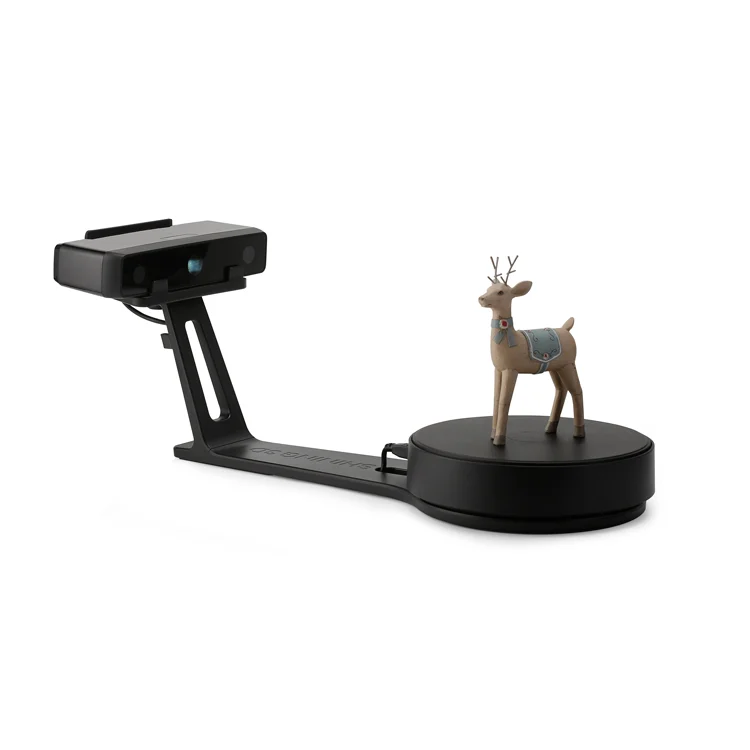 Upload scans to HxDR for simple cloud storage, including any E57 file or directly from compatible Leica BLK scanners.
Upload scans to HxDR for simple cloud storage, including any E57 file or directly from compatible Leica BLK scanners.
Download the App!
The Cyclone FIELD 360 mobile-device app is free to download. A valid Cyclone REGISTER, Cyclone REGISTER 360 or Cyclone REGISTER 360 (BLK Edition) licence is required to activate Cyclone FIELD 360 as the login credentials are the same. Download the Cyclone FIELD 360 app from the App Store and Google Play.
Previous Next
Any questions?
Get in touch with the Leica BLK360 Sales Team
CONTACT US
Downloads
Leica BLK360 Data SheetContact Sales for BLK360
Get in contact with our BLK360 sales for more information.
Get in contact with our BLK360 sales for more information.
CONTACT US
Get to Know the New BLK360
We caught up with BLK Product Manager Gian-Phillip Patri to discuss the ins and outs of the next-gen scanner and what sets it apart from its award-winning predecessor, the Leica BLK360 G1.
We caught up with BLK Product Manager Gian-Phillip Patri to discuss the ins and outs of the next-gen scanner and what sets it apart from its award-winning predecessor, the...
Which Should I Buy?
Learn the Differences between the BLK360 G1 and the new BLK360.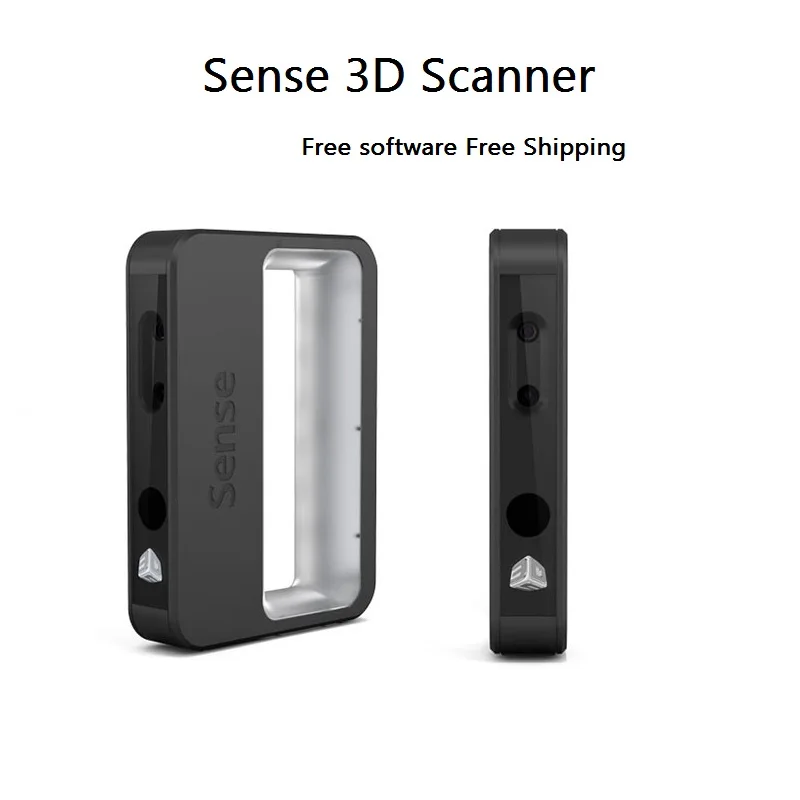
Learn the Differences between the BLK360 G1 and the new BLK360.
Hands on With the New BLK360
As one of the first reality capture professionals to test the new Leica BLK360, Corey Weiner sat down with us to answer a few questions about his first impressions, performance improvements, and what it means for his AEC-heavy business.
As one of the first reality capture professionals to test the new Leica BLK360, Corey Weiner sat down with us to answer a few questions about his first impressions,...
Dataset Downloads
Individual datasets of BLK360 scans are available for download
Individual datasets of BLK360 scans are available for download
Disrupting the Disruptor
Watch Video
Desktop 3D Scanners - EinScan Multifunctional 3D Scanner
Get a quote
Please fill out this form to receive a free quote within 24 hours (during working days).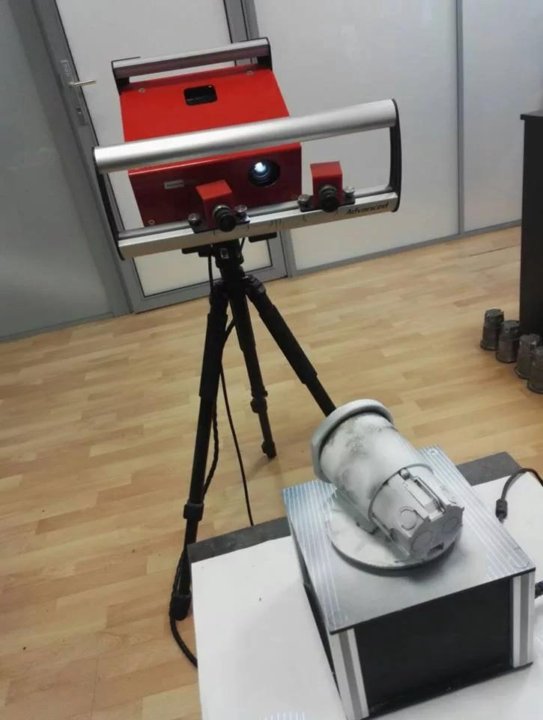
AfghanistanALAND ISLANDSAlbaniaAlgeriaAmerican SamoaAndorraAngolaAnguillaAntigua And BarbudaArgentinaArmeniaArubaAustraliaAustriaAzerbaijanBahamasBahrainBangladeshBarbadosBelarusBelgiumBelizeBeninBermudaBhutanBolivia, Plurinational State OfBosnia And HerzegovinaBotswanaBouvet IslandBrazilBritish Indian Ocean TerritoryBrunei DarussalamBulgariaBurkina FasoBurundiCambodiaCameroonCanadaCape VerdeCayman IslandsCentral African RepublicChadChileChinaChristmas IslandCocos (Keeling) IslandsColombiaComorosCongoCook IslandsCosta RicaC?te D'IvoireCroatiaCubaCyprusCzech RepublicDenmarkDjiboutiDominicaDominican RepublicEcuadorEgyptEl SalvadorEquatorial GuineaEritreaEstoniaEthiopiaFalkland Islands (Malvinas)Faroe IslandsFijiFinlandFranceFrench GuianaFrench PolynesiaFrench Southern TerritoriesGabonGambiaGeorgiaGermanyGhanaGibraltarGreeceGreenlandGrenadaGuadeloupeGuamGuatemalaGuernseyGuineaGuinea-BissauGuyanaHaitiHeard Island And Mcdonald IslandsHoly See (Vatican City State)HondurasHong KongHungaryIcel andIndiaIndonesiaIran, Islamic Republic OfIraqIrelandIsle Of ManIsraelItalyJamaicaJapanJordanKazakhstanKenyaKiribatiKorea, Republic OfKosovoKuwaitKyrgyzstanLao People'S Democratic RepublicLatviaLebanonLesothoLiberiaLibyan Arab JamahiriyaLiechtensteinLithuaniaLuxembourgMacaoMadagascarMalawiMalaysiaMaldivesMaliMaltaMarshall IslandsMartiniqueMauritaniaMauritiusMayotteMexicoMicronesia, Federated States OfMoldova, Republic OfMonacoMongoliaMontenegroMontserratMoroccoMozambiqueMyanmarNamibiaNauruNepalNetherlandsNetherlands AntillesNew CaledoniaNew ZealandNicaraguaNigerNigeriaNiueNorfolk IslandNorthern Mariana IslandsNorwayNORTH KOREAOmanPakistanPalauPalestinian Territory, OccupiedPanamaPapua New GuineaParaguayPeruPhilippinesPitcairnPolandPortugalPuerto RicoQatarReunionRomaniaRussian FederationRwandaSaint BarthélemySaint HelenaSaint Kitts And NevisSaint LuciaSaint MartinSaint Pierre And MiquelonSaint Vincent And The GrenadinesSamoaSan MarinoSao Tome And PrincipeSaudi ArabiaSenegalSerbiaSeychel lesSierra LeoneSingaporeSlovakiaSloveniaSolomon IslandsSomaliaSouth AfricaSpainSri LankaSudanSurinameSvalbard And Jan MayenSwazilandSwedenSwitzerlandSyrian Arab RepublicTaiwan, Province Of ChinaTajikistanTanzania, United Republic OftestThailandTimor-LesteTogoTokelauTongaTrinidad And TobagoTunisiaTurkeyTurkmenistanTurks And Caicos IslandsTuvaluUgandaUkraineUnited Arab EmiratesUnited KingdomUnited StatesUruguayUzbekistanVanuatuVenezuela, Bolivarian Republic OfViet NamVirgin Islands, BritishVirgin Islands, U.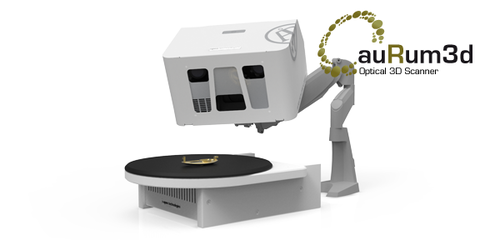 S.Wallis And FutunaWestern SaharaYemenZambiaZimbabweMACEDONIASOUTH GEORGIADemocratic Republic of the Congo
S.Wallis And FutunaWestern SaharaYemenZambiaZimbabweMACEDONIASOUTH GEORGIADemocratic Republic of the Congo
* Which product are you interested in?* Desktop 3d scanner* Hybrid light source handheld 3d scanner* Multifunctional handheld 3d scanner* Multiple scan range 3d scanner* Other Products and Service
submit...
Choose a 3D scanner: types, advantages, tasks to be solved
3D scanners
3D basics
Reverse engineering
Geometry control
Digital Archiving
Best by Topic
Quality Control Automation
Author: Semen Popadyuk
Author: Semyon Popadyuk
Benefits of 3D Scanners | What tasks does 3D scanning solve | Criteria for choosing a 3D scanner | Professional 3D scanning for fast and efficient production solutions
Modern 3D scanners have a wide range of features and a variety of functionality. They are used everywhere - in manufacturing, construction, education, the entertainment industry and are used even in everyday life. In order to choose the scanner that suits your needs, there are a number of aspects to consider, which we will discuss in this article.
They are used everywhere - in manufacturing, construction, education, the entertainment industry and are used even in everyday life. In order to choose the scanner that suits your needs, there are a number of aspects to consider, which we will discuss in this article.
Order a free test 3D-scan using the equipment of the world's leading manufacturers:
Leave a request
Advantages of 3D Scanners
What is a 3D scanner? This is a device designed to quickly analyze a physical object and create its accurate 3D computer model. The principle of its operation is based on calculating the distance to the object using two cameras. In addition to the cameras, a backlight is used - LED or laser.
3D scanners are classified both according to their form of execution (stationary and portable) and according to the areas of use, mainly divided into professional and household.
3D scanners make it possible to significantly reduce the time and costs at the development stage, improve the quality of products and, ultimately, speed up the release of the product to the market. They can be used at any stage of product lifecycle management and will help to optimize the production process of enterprises in various industries, including:
- automotive,
- mechanical engineering,
- aerospace industry,
- oil and gas industry,
- shipbuilding,
- construction and architecture,
- arts and culture,
- medicine,
- jewelry,
- science and education.
3D scanning devices remove many of the limitations of traditional measuring equipment. Such tools familiar to the metrologist as templates, micrometers, calipers are inexpensive, but they are characterized by subjective readings and are not suitable for complex measurements. Coordinate measuring machines are more accurate than 3D scanners, but they are more expensive, larger, and require specialized operator training.
Coordinate measuring machines are more accurate than 3D scanners, but they are more expensive, larger, and require specialized operator training.
Optical inspection systems, which include 3D scanners, are the best solution in terms of price and quality, as they provide:
- measurement speed,
- high precision digitization of objects of complex geometry,
- can work autonomously,
- are easy to operate.
Thanks to a 3D scanner, the work of a designer, technologist, and constructor is greatly facilitated: the performance of time-consuming complex measurements and the creation of a design from scratch are a thing of the past.
What tasks does 3D scanning solve
- Quality control: the ability to check any geometric parameters, including input and output control, metrological control of parts and production equipment.

- Reverse engineering of products for prompt receipt of project documentation and product upgrades.
- Design and simulation for the purpose of prototyping and evaluation of the appearance of products, modernization of production facilities and equipment.
- Digital archiving of any required assortment (eg discontinued parts). Models stored in digital libraries are available remotely from anywhere in the world.
Selection criteria for 3D scanner
The main criterion is scanning accuracy . High-precision devices (10-30 microns) will help to get a phenomenal result: they are able to transfer the most complex surface geometry into 3D with minimal errors. Such 3D scanners are used in reverse engineering, quality control, medicine, and are used to digitize molds, device parts, etc. 3D scanners with an accuracy of 30–100 engineering.
ZG AtlaScan is the world's first 3D scanner with hole capture
When choosing a 3D scanner, you should also consider resolution (detail) , i. e. the degree of discreteness that is available when digitizing an object. The highest level of detail allows you to display the smallest elements in the 3D model.
e. the degree of discreteness that is available when digitizing an object. The highest level of detail allows you to display the smallest elements in the 3D model.
Р the size of the scanned objects and, accordingly, the mobility of the 3D scanner are directly dependent on the type of device you select. When digitizing parts and objects of small and medium parameters, hand-held scanners are usually used. Stationary scanners are suitable for capturing complex small and medium-sized products with small details. Scanning of large objects (buildings, structures, communications) is performed using ground-based laser devices (range finders).
When studying the functionality of 3D scanners, pay attention to such points as the conditions of use, scanning speed, the surface of the scanned object, and color.
Please note that the next step after scanning is to obtain and further work with the CAD model, and for this you will need specialized software.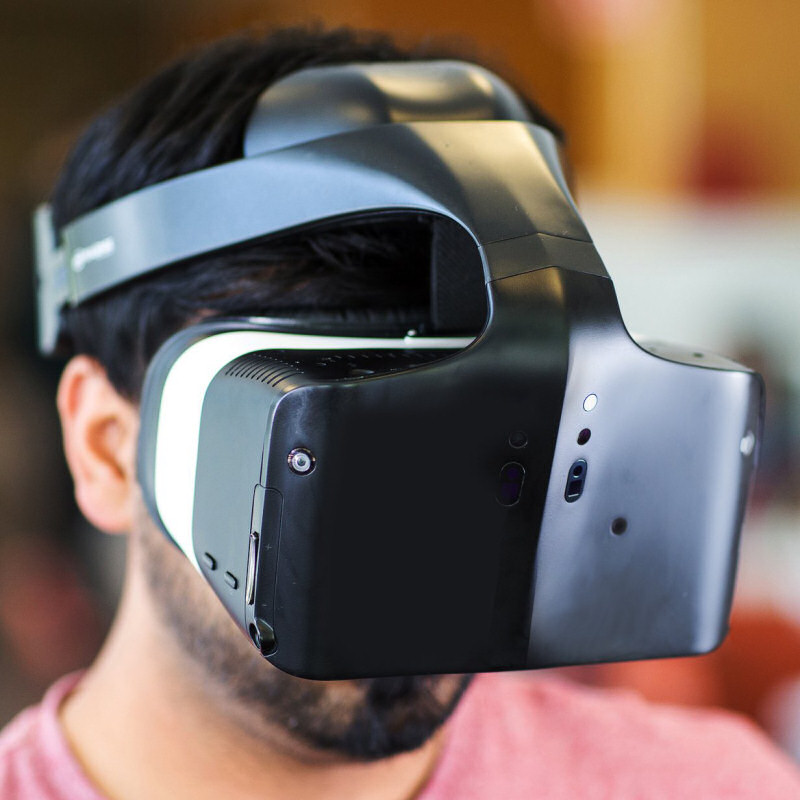
Processing 3D Scan Data for Reverse Engineering in Geomagic Design X Software
Professional 3D scanning for fast and efficient production solutions
iQB offers cutting-edge solutions that successfully operate in leading enterprises around the world:
- Portable devices for metrological 3D measurements from ZG Technology (China). The line includes a wide range of instruments, from an affordable handheld 3D scanner to a powerful optical tracking measurement system, as well as photogrammetry and portable CMM. ZG's unique strengths include the world's first handheld MarvelScan solution with three cameras for markless laser scanning and tracker, and proprietary instant hole capture technology. ZG Technology 3D scanners provide measurement speed up to 1 million 350 thousand points per second and accuracy up to 0.01 mm.
- Stationary Russian-made RangeVision PRO 3D optical scanner is an industrial solution for metrology, available to companies of any level.
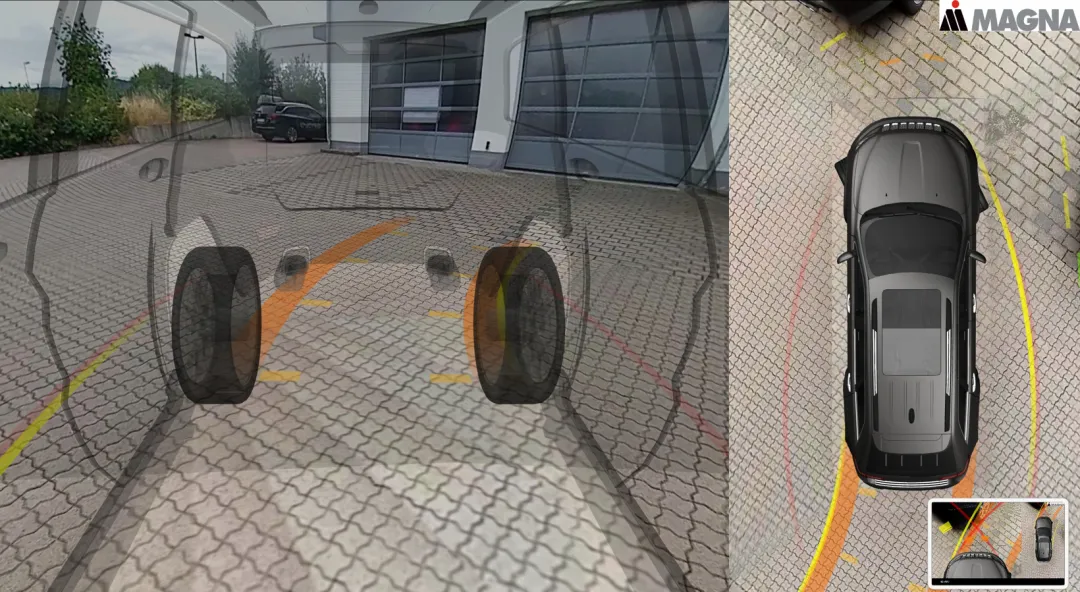 The device is designed to digitize objects from 1 mm to 5 m and offers the highest level of accuracy (up to 0.018 mm) and 3D resolution (up to 0.04 mm). This is the first domestic 3D scanner approved by the Federal Agency for Technical Regulation and Metrology as a type of measuring instrument.
The device is designed to digitize objects from 1 mm to 5 m and offers the highest level of accuracy (up to 0.018 mm) and 3D resolution (up to 0.04 mm). This is the first domestic 3D scanner approved by the Federal Agency for Technical Regulation and Metrology as a type of measuring instrument. - Creaform handheld 3D scanners for digitizing products ranging in size from a few centimeters to 6 meters. The Go!SCAN series devices (including the latest Go!SCAN SPARK) are based on structured illumination technology; HandySCAN 3D and MetraSCAN 3D are laser devices that are certified industrial grade metrology tools. The new generation MetraSCAN BLACK|Elite model is the fastest handheld 3D laser scanner on the market (1.8 million measurements per second). The volumetric accuracy that Creaform technology can provide is up to 80 microns per 16 cc.
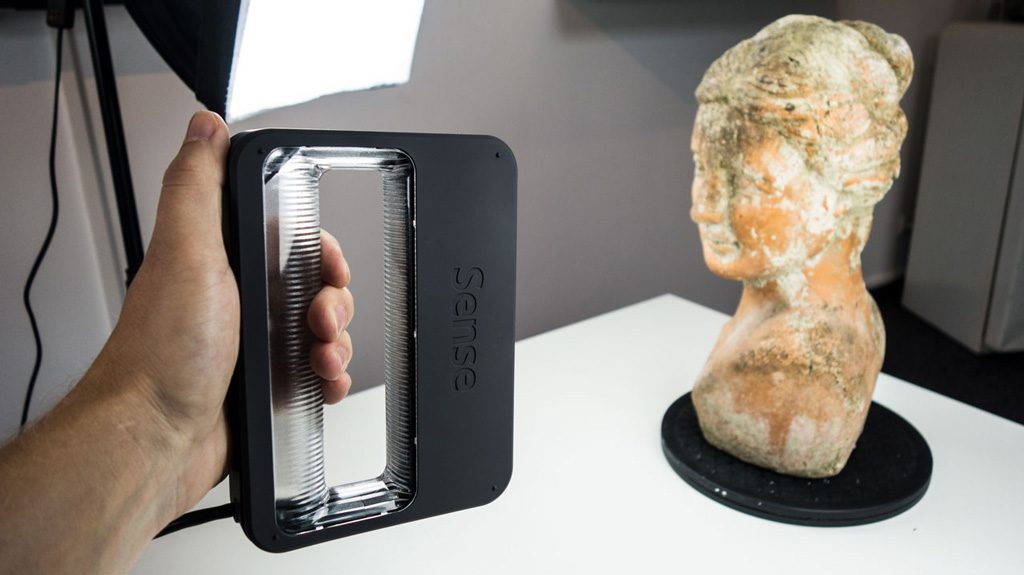 m.
m. - Creaform also produces 3D scanners and software under the peel 3d brand, combining affordability, ease of use and high quality. The line is designed to solve the problems of reverse engineering and digitalization of objects in such areas as art, preservation of cultural values, consumer goods, science and education, human body scanning. Peel 3d devices are capable of measuring objects from 0.3 to 3 m with an accuracy of 0.1 mm.
RangeVision PRO Fixed Scanner Creates Yamaha R3 Sport Fairings with Improved Aerodynamics, High Strength and Lighter Weight
- Solutionix fixed optical 3D scanners for small objects (10-500 mm) with many small parts. Allow to receive an error less than 8 microns.
- FARO Focus 3D geodetic laser scanners perform fast and accurate scanning of large objects, complex structures, premises and landscapes. They operate in the range from 0.6 to 350 m, they are distinguished by increased accuracy, ease of operation and the ability to operate in the most difficult environmental conditions.
- EPiC budget 3D terrestrial laser scanners are based on the principles of simplicity, convenience and affordability.
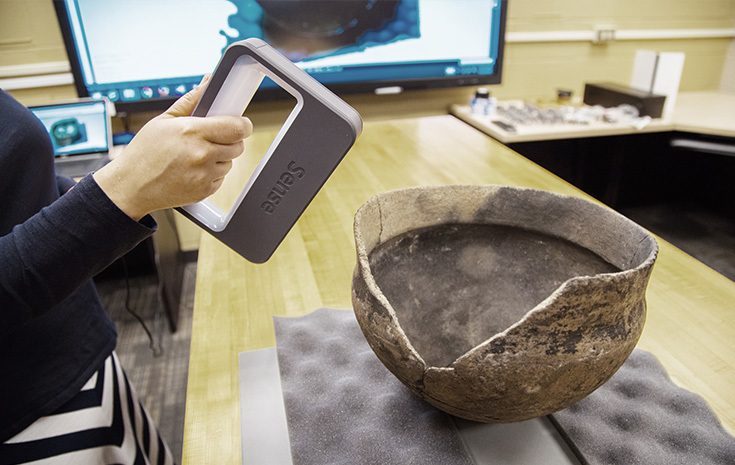 Their main advantages are super light weight, high shooting speed (from 30 to 90 seconds), 360-degree panoramic camera and the ability to control from a mobile device.
Their main advantages are super light weight, high shooting speed (from 30 to 90 seconds), 360-degree panoramic camera and the ability to control from a mobile device.
Many of the above scanners are included in the register of measuring instruments of the Russian Federation and have the appropriate certificates.
Robotic 3D scanning systems, such as Creaform MetraSCAN 3D-R, allow you to increase the speed and efficiency of quality control directly on the conveyor
A variety of 3D scanning devices on the market will allow you to choose exactly the model that is needed for solving specific problems. The price range is also wide: from simple devices costing up to $500 to high-precision professional 3D scanners costing tens and even hundreds of thousands of dollars.
Contact iQB Technologies experts! We will select the optimal solution that will optimize product development and production in your enterprise, design office or research center.









